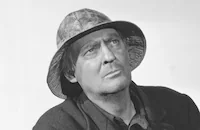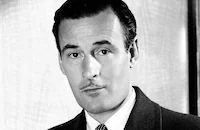Ann Sothern, best known for her brassy character parts in movies like the Maisie (1939) series and A Letter to Three Wives (1949), shows off her vocal talents by singing several of the movie's songs. Robert Young, who went on to television fame in Father Knows Best and Marcus Welby, M.D. has fun with his role of Dixie's contrary on-again/off-again husband. Tap-dancing powerhouse Eleanor Powell struts her stuff in a supporting role as dancer Marilyn Marsh, who tries to get the couple back together. Her first big number has her practicing an elaborate dance routine with a scene-stealing dog. MGM had auditioned several trained canines for the number, but none could do all of the necessary tricks. Eventually, Powell set out to find her own four-legged dancing partner, eventually buying a dog from a prop man on the set, and trained it for the dance sequence herself. Her second showstopper, "Fascinating Rhythm," highlights Powell at her toe-tapping best amidst an elaborate set including eight grand pianos and 100 cane-wielding male dancers. Legendary choreographer Busby Berkeley, who staged all the numbers in Lady Be Good, called Powell "by far the finest female dancer we ever had in films, and a very hardworking perfectionist." The demanding "Fascinating Rhythm" number left her battered and bruised, but Berkeley was quick to note that she never complained in her quest to get it exactly right. Berkeley himself was an early candidate to direct the entire picture, but Ann Sothern and Powell were against it, possibly because of an unpleasant prior working experience. So, the directing reins ultimately went to Norman Z. McLeod.
The song "The Last Time I Saw Paris" caused some controversy when it won the Academy Award for Best Song that year. Long before Lady Be Good came to be, lyricist Oscar Hammerstein II had been working on a Broadway musical called Sunny River, but was distracted by the upsetting news of the Nazi occupation of Paris during World War II. In less than an hour he had the words that expressed his bittersweet sentiment over his last trip to the City of Light. He sent the lyrics to Kern who promptly added music. The song struck a chord with audiences and became an instant hit. Since it was essentially borrowed for Lady Be Good and not written expressly for the film, some members of the songwriting community grumbled that it should not have been eligible for an Academy Award. Nevertheless, the song retained its award and remains an understated highlight of this movie.
Producer: Arthur Freed
Director: Norman Z. McLeod
Screenplay: Jack McGowan
Art Direction: Cedric Gibbons
Cinematography: George J. Folsey, Oliver T. Marsh
Costume Design: Adrian
Film Editing: Fredrick Y. Smith
Original Music: Jerome Kern
Principal Cast: Eleanor Powell (Marilyn Marsh), Ann Sothern (Dixie Donegan), Robert Young (Eddie Crane), Lionel Barrymore (Judge Murdock), John Carroll (Buddy Crawford).
BW-112m. Closed captioning.
By Andrea Foshee






























